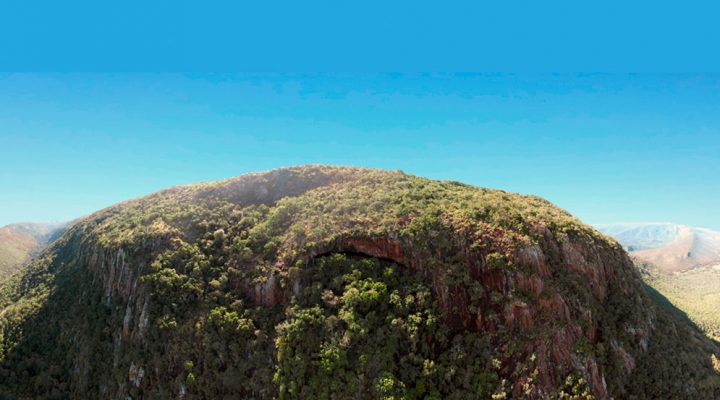SOCIAL SCIENCES AND HUMANITIES
CONICET archeologist participates in a study that reveals the dietary practices of human beings that lived 170 thousand years ago
This discovery provides unpublished information on the nutrition customs of the first anatomically modern human beings of the South African continent.
A study recently published in Science shows a new discovery: 170 thousand years ago, individuals that lived in Border Cave, which is near the border of South Africa and Swaziland, extracted carbohydrate-rich rhizomes from the soil for cooking and consumption.
For Dr. Lucinda Backwell, CONICET postdoctoral fellow who participated in the study along with international paleontologists and archeologists, this discovery provides new information to reconstruct part of the diet of our Paleolithic ancestors from Southeast Africa.
Border Cave, a primitive residence
In 1934 experts began the excavations in search of archaeological material. The cave is located in the mountains of Lebombo, on the border between KwaZulu-Natal (South Africa) and Esuatini, a country previously known as Kingdom of Swaziland. The research work conducted during 2015 led to the find of multiple human remains attributed to the first men, as well as ancient plant material in an excellent state of preservation. This time Backwell, along with cosmopolitan group of scientists, found about fifty charred whole rhizomes. These are edible stems that grow underground and as the study indicates, they are individuals that used to be included in their dietary practices.
Due to its shape and size, apart from the details derived from the analyses of the vascular structure –information obtained from the use of scanning electron microscopy techniques–, the researchers managed to identify that the rhizomes belong to the genus Hypoxis. “The living representatives of Hypoxis and its older counterparts have similar cellular structures and the same conclusions of microscopic crystal beams called rafids,” explains the fellow of the Instituto Superior de Estudios Sociales (ISES, CONICET-UNT), to show the morphological similarities with current species of the same genus.
It is worth mentioning that these rhizomes are rich in carbohydrates and have an energy value of approximately 500 KJ per 100 grams. Although they can be ingested raw, they are difficult to chew as they are fibrous. So “cooking makes them easier to peel and digest, which increases their nutritional benefits,” Backwell explains. She also mentions the possibility that the inhabitants of these áreas introduced them to the cave to cook them in the ashes of bonfires. Therefore, the discovery also involves the use of digging sticks to extract vegetables, although the researcher does not provide evidence of these tools so far.
Furthermore, the archeologist and the rest of the scientists who participated in the study – they are Francesco d’Errico, professional at the University of Bordeaux and the French Ministry of Culture, and Chrissie Sievers and Lyn Wadley, members of the University of Witwatersrand, in Johannesburg– consider that if prehistoric rhizomes were found in the cave, it can be inferred that the food was shared and not consumed in isolation.
It is also important to mention that this plant is currently dispersed in other regions of the continent and it provides a reliable source of food for modern populations from sub-Saharan Africa, southern Sudan, some islands in the Indian Ocean and from Yemen. The distribution of this resource allows the population to migrate inside and outside Africa, and aspect that suggests one intrinsic relationship with its consumption in the past and in other areas more or less distant from the current discovery.
All the information provided in the scientific publication derives from an extensive study that has been conducted for more than five years by an international team of experts whose promising results seek to redefine the eating habits of the primitive inhabitants of Africa.
By Maximiliano Grosso – CCT NOA SUR
References
Wadley, L., Backwell, L., d’Errico, F. and Sievers, C. 2020. Cooked starchy rhizomes in Africa 170 thousand years ago. Science. 367(6473): 87-91. https://doi.org/10.1126/science.aaz5926.
